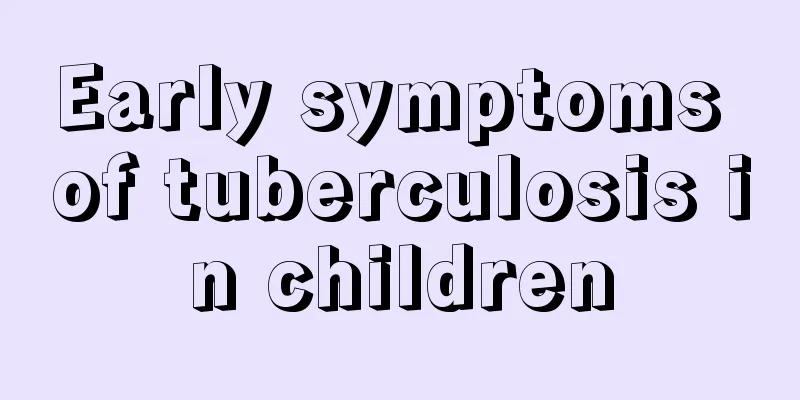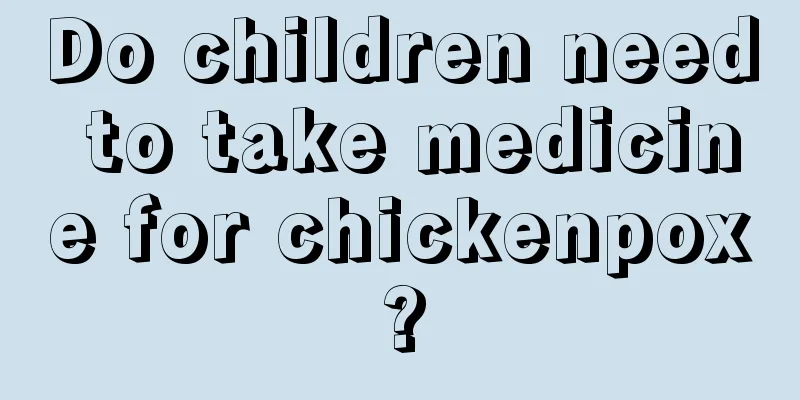Early symptoms of tuberculosis in children

|
Tuberculosis in children is a relatively serious disease. Children with tuberculosis should be examined in time. Children often show a variety of symptoms. The most common one is coughing. Sometimes there will be spasmodic coughing. Children will have symptoms of wheezing. Sometimes it will cause swollen lymph nodes throughout the body, causing fever, loss of appetite, weight loss and other symptoms. Good treatment should be carried out in time. Early symptoms of tuberculosis in children Tuberculosis in children is mainly primary pulmonary tuberculosis. Due to the strong reactivity of children's bodies and imperfect immune functions, tuberculosis in children is different from tuberculosis in adults. The clinical manifestations of primary pulmonary tuberculosis in children: generally the onset is slow, and mild cases may be asymptomatic or only have low fever, mild cough, loss of appetite, etc. Slightly more serious cases have long-term irregular low fever, night sweats, fatigue, loss of appetite, weight loss and other symptoms of chronic tuberculosis poisoning. The lymphatic system is widely affected, with enlarged lymph nodes throughout the body, most commonly in the cervical, mediastinal, and hilar lymph nodes. The cervical lymph nodes are enlarged to varying degrees. When it is obviously swollen, compression of the tracheal bifurcation may cause spasmodic cough, and compression of the bronchus to partial obstruction may cause wheezing. Some children may develop herpetic conjunctivitis, erythema nodosum and/or multiple transient arthritis. It is recommended that you go to the hospital for a tuberculin test and a chest X-ray, which is an essential examination for diagnosing pulmonary tuberculosis. If primary tuberculosis in children is detected early and treated appropriately, they can usually recover, with calcification being the main form of healing. What are the transmission channels of tuberculosis in children? 1. Respiratory tract infection: It is the main route of infection. When a tuberculosis patient coughs, the tuberculosis bacteria are dispersed into the air with the saliva, or the dried, contaminated sputum dust flies in the air. When susceptible children inhale this contaminated air, under certain conditions, the tuberculosis bacteria can cause infection in the lungs. 2. Digestive tract infection: It is mostly caused by drinking unsterilized milk contaminated with bovine tuberculosis or other food contaminated with human tuberculosis, and the disease often occurs with primary lesions in the pharynx or intestines. 3. Other infections: Transmission through the skin is extremely rare. Congenital tuberculosis is transmitted through the placenta or inhalation of amniotic fluid. Infection is more common after birth, and miliary tuberculosis occurs soon after. Mothers often suffer from systemic tuberculosis before delivery, mainly miliary tuberculosis or genital tuberculosis. |
<<: What causes low blood sugar in children?
>>: Baby often sticks out tongue
Recommend
At what age do children start to replace their first teeth?
As we all know, children will change their teeth ...
What to do if your child develops too early
It is not a good thing for a child to develop phy...
What is the standard height and weight for a 3-year-old girl?
For parents, it must be very gratifying to see th...
Diet for teenagers to grow taller
I believe everyone knows the importance of height...
Bleeding ears in children
Ear bleeding is not a very common phenomenon in l...
What to do if your baby is fussy during sleep?
Babies sometimes cry loudly when they are sleepin...
What is the reason for the child's red lips?
Parents should take good care of their children, ...
How to reduce fever quickly in children
Adults' physical resistance is much stronger ...
What are the dangers of obesity to children?
Childhood obesity has become a very serious topic...
Development indicators of infants in April
As parents, when our children become unwell, we a...
Baby Food Encyclopedia
For babies who have just been born, we must pay s...
What to do if a child accidentally swallows an adult's medicine
The human body often has many problems, and not o...
What are the developmental indicators for a two and a half year old baby?
In life, a newborn baby is the focus of the whole...
What are the treatments for anorexia in children?
If a child suffers from anorexia, the parents wil...
What to do if your three-month-old baby has sticky stools
My baby, who is just three months old, has sympto...









